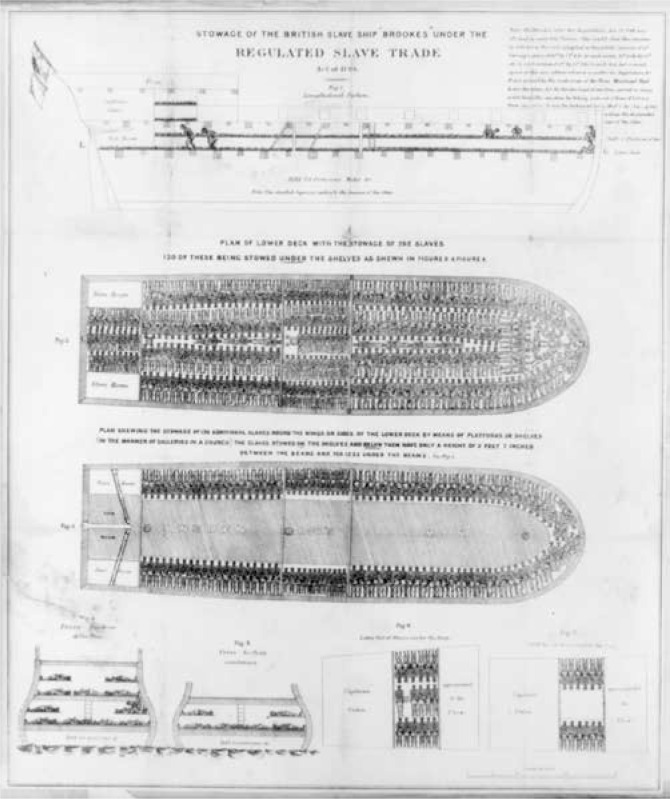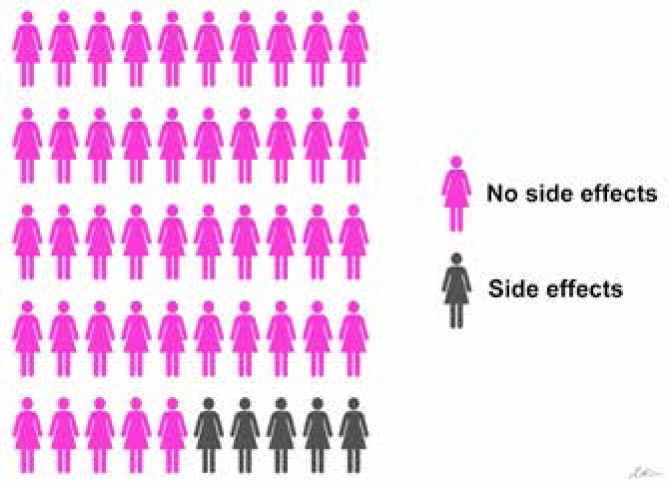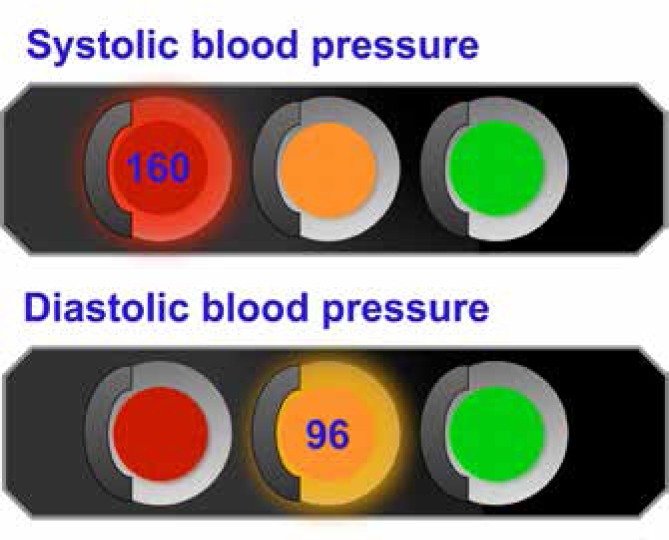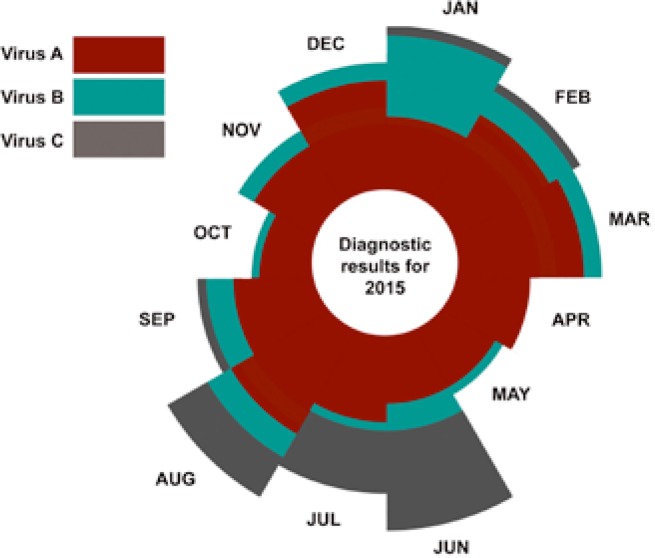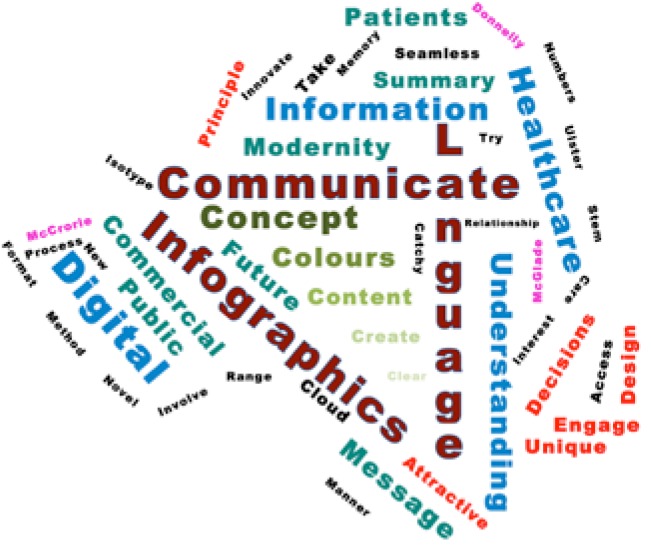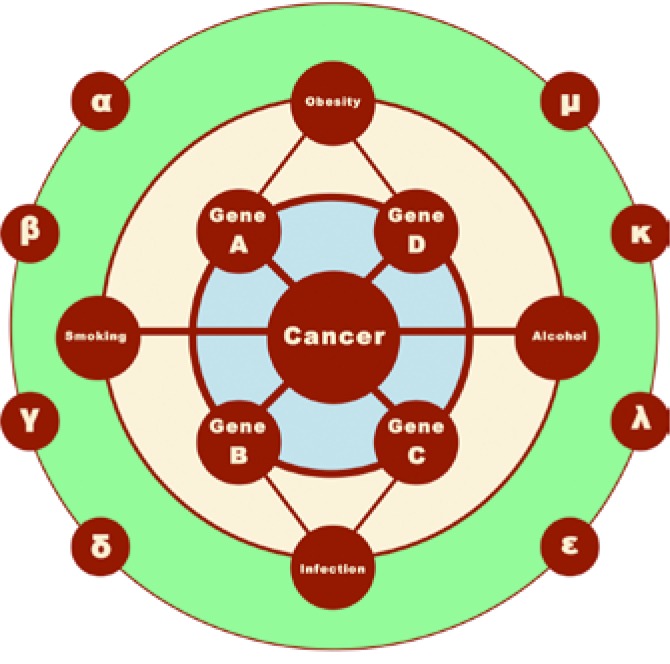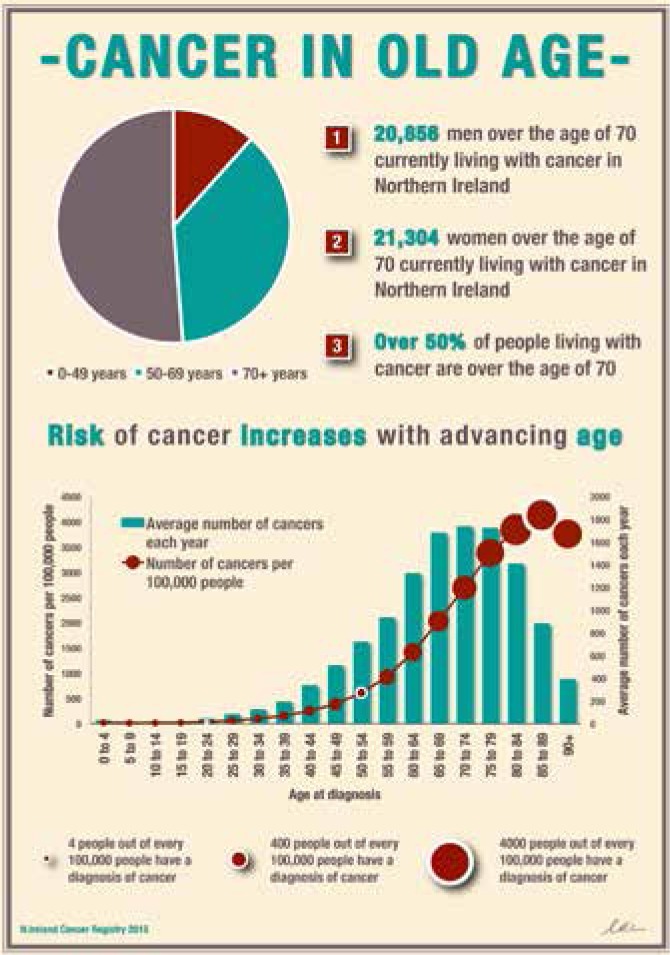SUMMARY
Infographics are an innovative and engaging method of visually communicating information in a colourful and concise manner. There has been substantial interest in their use within the commercial and health sectors.
Healthcare professionals already use infographics to communicate medical information to their patients. A firm grasp of health information enhances patients’ decision making capabilities and may improve the practitioner-patient relationship. Infographics can also be used at the population level for public health messages.
Because healthcare practitioners are likely to be consulted during their creation and use, this article aims to walk the reader through a number of different infographics in order to outline how they may be used to communicate healthcare information.
WHAT IS AN INFOGRAPHIC?
Infographics are an innovative and engaging method of visually communicating information in a colourful and concise manner. Evidence suggests that the representation of information in graphic format enhances our understanding and ability to make decisions1.
The concept of presenting information in graphical format is not new. A number of early examples of data visualisation exist from the eighteenth century; most notably the depiction of the deck layout of the British slave ship Brookes in 17882. This information poster (see figure 1) depicted views of the reprehensible living conditions suffered by slaves during their voyage to the colonies and was reproduced countless times by the abolitionist movement in Georgian Britain. The combination of text, images, and narrative arguably make this an early predecessor of the modern charticle, which is a type of infographic discussed later in this article.
Fig 1.
Stowage of the British slave ship Brookes under the regulated slave trade. Courtesy of the Library of Congress, LCUSZ62-341602
Other noteworthy examples of data visualisation can be found in the nineteenth century. Florence Nightingale’s graphical representation of causes of mortality amongst British forces fighting in the Crimean war illustrated forcefully that death from preventable disease outnumbered other causes including battle wounds3. This was achieved using a type of infographic called a polar area diagram, which is also discussed later in this article. Nightingale was incredibly successful at reaching her target audience whilst simultaneously triggering attitudinal change. These remain important aims in modern infographic design4. Another historical example of data visualisation came in the early twentieth century in the form of Otto Neurath’s isotype picture language5. Neurath and his associates produced a vast library of communicative graphics addressing a variety of socio-political topics, many of which remain in use today. The philosophy of isotype picture language is elaborated upon during discussion of figure 3.
Fig 3.
Isotype array infographics communicate part to whole relationship between positive and negative outcomes and may be suited to visualisation of dichotomous information such as riskreward ratio of statin usage
Whereas Neurath principally designed his isotype language for people who had poor literacy or numeracy, the modern infographic is designed for quick assimilation to match the frenetic lives of a general public who are often unwilling or unable to spend time focusing on a piece of information long enough to understand it6. The commercial sector has enthusiastically taken up infographic design within the last decade or so as a means of communicating large quantities of otherwise difficult to assimilate information in a single easily understood and visually attractive product. There is evidence to suggest that an increasing demand for healthcare information exists, particularly amongst the ‘baby boomer’ generation who, as they age and develop greater risk of illness, are increasingly demanding access to good quality healthcare information in order to make decisions about their care7, for example, breast screening, prostate specific antigen testing, and decisions surrounding the risk-reward ratio of statin usage.
Infographics may be designed for mass consumption as a digital or print resource, for instance, via social media or traditional mediums such as newspapers. Alternatively, they may be used as a means of communicating with the public on a smaller scale (e.g. as a poster within a general practice). The use of infographics on a one-to-one scale has also been explored. A recent article by Harvard Medical School Professor David P Steensma evaluated the potential role of infographics in counselling patients affected by myelodysplastic syndrome8. Steensma concluded that the representation of outcomes in picture format might be a useful aid when counselling some of his patients about treatment complications. We anticipate that other similarly complex medical or surgical conditions could also benefit from this visually orientated approach to counselling.
Furthermore, infographics can be used to overcome language barriers. Communicating with patients who do not speak English as their first language has become increasingly common in Northern Ireland due to changing trends in migration9. A research team from Columbia University investigated the efficacy of infographics as a primary care communicative tool in the Washington Heights neighbourhood of Northern Manhattan10. Residents of this neighbourhood are majority Latino and overwhelmingly from the Dominican Republic, where the primary language is Spanish. Researchers found that successful infographics are those in which viewers could form symbolic or colour analogies. For example, blood pressure was visually linked with a traffic light system. High blood pressure was shown as a ‘red light’, therefore informing the viewer of ‘danger’ or the need to ‘stop’, whilst the opposite was true of healthy blood pressures and the colour green. Mildly elevated blood pressures were shown in amber to highlight need for caution (see figure 2). Similar analogies will likely also work well for communicating other results such as HbA1c or blood cholesterol.
Fig 2.
Traffic light infographic adapted with permission from Arcia et al designed to communicate blood pressure results using a metaphor most members of the public will be familiar with10
Five different types of infographics will be discussed within this article and we hope to demonstrate how they may be used to communicate a variety of healthcare information.
ISOTYPE ARRAYS
An isotype array represents increasing quantity as multiple identically sized graphics5. Isotype arrays are a useful means of negating the effects of framing bias, a type of bias that relates to which part of a sentence one decides to place emphasis upon1. For instance, it would be factually correct to state to patients that 90% of women within figure 3 were side effect free after treatment. However, because favourable outcomes are exclusively focused upon and the 10% of women experiencing side effects are not mentioned, evidence suggests many patients will be unable to make a fully informed decision about their care1.
Figure 3 shows fifty female icons, five of which are coloured grey to show how many women experience treatment induced side effects whilst the remainder are coloured pink to demonstrate absence of side effects. Communicating this type of information with the aid of an isotype array allows viewers to judge their future risk by visualising positive and negative outcomes.
However, researchers found that a significant number of people who did not speak English as their first language had a tendency to misunderstand isotype arrays because they interpreted them too literally10. For instance, infographics advising on quantity of fruit to consume each week (with an apple icon depicting fruit) were interpreted to mean apples were the only fruit that should be eaten. Similarly, the presence of male or female stick figures may be mistaken as implying gender specific disease. Both can be addressed by clearly presenting context in infographic design and publication.
POLAR AREA DIAGRAMS
A polar area diagram (also known as a ‘coxcomb graph’) is a pie chart combined with some of the features of a stacked bar chart11. Unlike pie charts, where slices differ in angle and area but are equal in radius, each slice within a polar area diagram is equal in angle but different in area and radius. Individual slices are colourfully divided in a similar manner to stacked bars. Figure 4 represents fictional virology lab data for the year 2015.
Fig 4.
Polar area diagram shows annual incidence of three viruses (A-C) within a fictional virology laboratory. Each slice is equal in angle (30°) but differs in area and radius
Each slice represents one month of the year and is therefore 30° (360/12). Slice area differs based upon total number of viruses diagnosed each month. Slices are broken down into three different types of viruses, which are always represented in the same order from virus A (innermost) to virus C (outermost). Slices advance in a clockwise direction as we progress through a calendar year.
Three pieces of information are contained within this infographic. Firstly, virus A has a year round incidence and remains the most common of the three viruses. Secondly, there are two annual peaks in incidence (summer and winter). Finally, whilst there is a spike in the incidence of virus B during winter months, it is virus C that increases in incidence during summer months. If a more precise comparison of viral incidence is desired, then this graphic would benefit from inclusion of an explanatory key equating slice area with a numerical value.
WORD CLOUDS
A word cloud is a method of visualising text in a colourful and eye catching manner. Words are clustered together and ranked in importance according to size, prominence, and colour. An earlier draft of this article was analysed for the most frequently used words and after removing conjunctive words like ‘and’ or ‘but’, a list of remaining words were used to produce figure 5. The importance of words such as ‘infographic’ and ‘communicate’ is emphasised by their size, location, and colour.
Fig 5.
Word cloud infographic. The size, position, and colour of words communicate importance
Less prominent words are smaller and coloured differently. Therefore, there is a hierarchy of differently sized and coloured words to highlight the logical order readers should approach our word cloud. In the healthcare setting, word clouds can be used as a means of summarising and linking users to sections of text such as those found within public health documents or clinical guidelines. They may also be used online to link web users to parts of a website based upon previous popular search terms or content.
HUB AND SPOKE DIAGRAMS
These involve the depiction of a central ‘hub’ surrounded by branching ‘spokes’ that connects the central topic to a number of peripheral topics. This form of infographic has become a powerful communicative tool in the explanation of a range of scientific phenomenon12. Figure 6 illustrates the link between a fictional type of cancer and a number of aetiological factors. Four short branching spokes surround the central hub ‘cancer’ linking it to four causative genes. These are the innermost, and by extension, most important risk factors for cancer in this diagram. Each individual gene is directly connected to cancer and capable of causing cancer in isolation. If we progress to the second layer from the central hub we can see two factors that are directly linked to the central hub (‘smoking’ and ‘alcohol’) whilst the other two are connected to genes found in the innermost layer (‘obesity’ and ‘infection’). This is a method of representing direct vs. indirect causation. In this diagram smoking has the potential to directly cause cancer but infection will only lead to cancer in the presence of gene B or C (i.e. infection is connected to the central hub but only indirectly through other spokes).
Fig 6.
Hub and spoke diagrams involve a central ‘hub’ surrounded by a number of ‘spokes’ similar to a bicycle wheel. This infographic illustrates the relationship between a fictional cancer and a number of causative factors
The outermost layer of this diagram contains a number of letters of the Greek alphabet that do not have any attachment (direct or indirect) to the central hub. These are intended to represent risk factors that correlate with but do not cause cancer. This is probably one of the more difficult to understand infographics discussed within this article and, for this reason, it is primarily targeted at members of the public with an interest in healthcare science. However, with the aid of an accompanying text based explanation, hub and spoke diagrams could have a place in the visual explanation of multifactorial disease.
CHARTICLES
A charticle contains a combination of attractive colours, easily understood text, and key graphs or charts that aid in the delivery of a central message. They are excellent alternatives to traditional articles when it is anticipated that viewers may not have the time or patience to read and understand large quantities of text. Figure 7 is a charticle addressing the relationship between cancer and ageing. Colours are an important means of attracting viewers to the infographic and not only grab attention, but also alter mood and energy levels13. We found that pale colours worked best as a background whilst bold colours were suited to emphasising key pieces of information within the charticle. The key ‘take home message’ was purposefully placed centrally so as to draw the viewer’s eye whilst information above and below gives additional detail for those interested.
Fig 7.
Charticle infographic outlines relationship between cancer risk and ageing using incidence and prevalence data from the N.Ireland Cancer Registry database
Psychological studies suggest that terms such as ‘doubtful’, ‘probable’, or ‘likely’ were inconsistently understood amongst the general public14. For this reason, such terms are avoided in this charticle. In addition, it is possible to inadvertently introduce bias into a statement via something called denominator neglect. This is a form of cognitive bias that influences the viewer’s ability to correctly understand fractions by focusing attention on the wrong aspect of the ratio, for example mistakenly identifying 1 in 3 as being smaller than 2 in 6. It is recommended that where ratios are used, consistent denominators should be employed15. The denominator is maintained as 100,000 to allow for an unbiased comparison of cancer risk as we age.
Pie charts are familiar and acceptable to the general public1. Therefore, one is included in figure 7 to visually emphasise the fact that most people living with cancer in Northern Ireland are over the age of 70. A Pareto chart is also included. This type of graph combines bars and lines on a double axis grid in order to communicate two different data trends. In this example, we demonstrate that as the population of Northern Ireland ages there is a simultaneous dramatic increase in number of cancer cases diagnosed and number of people living with cancer between the ages of 40 and 80. An explanatory key below reveals the meaning of data point size by representing increased cancer incidence as increasingly large red circles.
CONCLUSION
Infographics are a useful and innovative means of communication with great potential for making medical information more accessible to the general public. Five different infographics have been discussed and we welcome constructive feedback or creative ideas from interested readers.
Footnotes
Northern Ireland Statistics and Research Agency, 2011 Census: Aggregate data (Northern Ireland) [computer file]. UK Data Service Census Support. Downloaded from: http://infuse.mimas.ac.uk. This information is licensed under the terms of the Open Government License [http://www.nationalarchives.gov.uk/doc/open-government-licence/version/2].
CONFLICTS OF INTEREST
The authors declare no conflicts of interest. The N.Ireland Cancer Registry is funded by the Public Health Agency Northern Ireland. Infographics were produced using a combination of Microsoft Word 2011, Infographics Word Edition 1.1, and Adobe Photoshop CC 2015. The mention of named computer software is not intended as an endorsement of these products.
Please note, this was the original reference given by the author regarding “Communicating with patients who do not speak English as their first language has become increasingly common in Northern Ireland due to changing trends in migration9.”
The reference is exactly as NISRA recommend citations, unfortunately it doesn’t provide access to the information as quoted by the author. The reference I’ve included is easily accessible and gives the same information, namely that Northern Ireland are undergoing changing trends in migration.
Obviously it is up to you, but the following reference doesn’t actually do the job of referencing the material, unless the author wants to give a more exact reference.
REFERENCES
- 1.Spiegelhalter D, Pearson M, Short I. Visualizing uncertainty about the future. Science. 2011;333(6048):1393–400. doi: 10.1126/science.1191181. [DOI] [PubMed] [Google Scholar]
- 2.Plymouth Chapter of the Society for Effecting the Abolition of the Slave Trade. Stowage of the British slave ship Brookes under the regulated slave trade act of 1788. England: Plymouth; 1788. Etching. [Held in the Library of Congress, Prints & Photographs Reading Room. LC-USZ62-34160.] Available at: http://www.loc.gov/pictures/item/98504459/ Last accessed February 2016. [Google Scholar]
- 3.Nightingale F. Notes on matters affecting the health, efficiency, and hospital administration of the British Army: founded chiefly on the experience of the late war. London: Harrison; 1858. pp. 310–311. Available at: https://archive.org/details/b20387118 Last accessed February 2016. [Google Scholar]
- 4.Berinato S. Visualizing Trouble. Harv Bus Rev. 2013;91(10):146–147. [Google Scholar]
- 5.Burke C, Kindel E, Walker S. Isotype: design and contexts 1925-1971. London: Hyphen Press; 2013. [Google Scholar]
- 6.Wes N. Advertising analytics 2.0. Harv Bus Rev. 2013;91(3):60–8. [Google Scholar]
- 7.LeRouge C, Van Slyke C, Seale D, Wright K. Baby boomers’ adoption of consumer health technologies: survey on readiness and barriers. J Med Internet Res. 2014;16(9):e200. doi: 10.2196/jmir.3049. [DOI] [PMC free article] [PubMed] [Google Scholar]
- 8.Steensma DP. Graphical representation of clinical outcomes for patients with myelodysplastic syndromes. Leuk Lymphoma. 2016;57(1):17–20. doi: 10.3109/10428194.2015.1061191. [DOI] [PubMed] [Google Scholar]
- 9.Russell R. Migration in Northern Ireland: an update. Belfast: Northern Ireland Assembly Research and Information Service; 2012. NIAR 10-12 Research Paper 31/12. Available from: http://www.niassembly.gov.uk/globalassets/documents/raise/publications/2012/general/3112.pdf. Last accessed March 2016. [Google Scholar]
- 10.Arcia A, Suero-Tejada N, Bales ME, Merrill JA, Yoon S, Woollen J, et al. Sometimes More is More: Iterative Participatory Design of Infographics for Engagement of Community Members with Varying Levels of Health Literacy. J Am Med Inform Assoc. 2015;23(1):174–83. doi: 10.1093/jamia/ocv079. [DOI] [PMC free article] [PubMed] [Google Scholar]
- 11.Magnello ME. Victorian statistical graphics and the iconography of Florence Nightingale’s polar area graph. BSHM Bull: Br Soc Hist Math. 2012;27(1):13–7. [Google Scholar]
- 12.Macosko EZ, Pokala N, Feinberg EH, Chalasani SH, Butcher RA, Clardy J, et al. A hub-and-spoke circuit drives pheromone attraction and social behaviour in C.elegans . Nature. 2009;458(7242):1171–5. doi: 10.1038/nature07886. [DOI] [PMC free article] [PubMed] [Google Scholar]
- 13.Singh S. Impact of color on marketing. Manag Decis. 2006;44(6):783–9. [Google Scholar]
- 14.Wallsten TS, Budescu DV, Rappaport A, Zwick R, Forsyth B. Measuring the vague meanings of probability terms. J Exp Psychol Gen. 1986;155(4):348–65. [Google Scholar]
- 15.Lipkus IM. Numeric, verbal, and visual formats of conveying health risks: suggested best practices and future recommendations. Med Decis Making. 2007;27(5):696–713. doi: 10.1177/0272989X07307271. [DOI] [PubMed] [Google Scholar]



